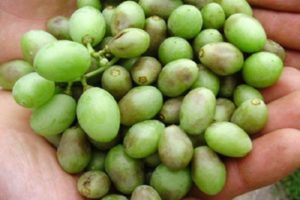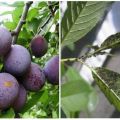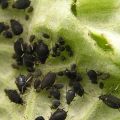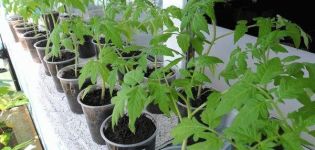Measures for the control of phylloxera on grapes and prevention, resistant to the pest of the variety
Harvesting a high grape harvest is not as easy as it seems at first glance. Only growers know what problems can be faced in the process of growing fruit. In the first place is the fight against diseases and the destruction of insects. Phyloxera is a grape aphid that infects the entire plant. By recognizing the pest in time and taking the right control measures, the vineyard can be saved. Phyloxera was introduced from North America at the end of the nineteenth century.
Description of the pest
Phyloxera is a species of aphid. She looks different. The appearance depends on gender, age, stage of development, location of the pest. The largest in size is a sexless female settler with wings. The smaller wingless female damages the root system. She has a long proboscis. The color is yellow with a brown tint. The female is leafy, half the size, with a short proboscis, yellow.
The size of males and females participating in the reproduction of offspring is even smaller. The proboscis and wings are missing. Females are yellowish, males are orange. The smallest is the first instar larva. Lemon color, with external digestion.
Kinds
There are several types of phylloxera. Among them stand out: wingless, winged, sexual, gallic.
Wingless
Aphids infect the roots of the bush. Hardy larvae hibernate underground. In spring they become active, reborn into females with a long proboscis. With its help, they feed on root juice. Harmful substances in saliva through the proboscis infect the rhizome.
Winged
The winged phylloxera infects the green part of the grapes, lays eggs on the leaves. The emerging aphids mate, contributing to the appearance of a sexual generation of larvae.

Sexual
The sexual generation of larvae moves from an infected plant to a healthy one. It is carried by wind, water for irrigation, rain.
Gallic
Gallic form spreads on young leaves. Phyloxera form tubercles on the leaves, from which larvae emerge. Pests move from leaf to leaf, infecting the plant.
Development cycle of grape aphids
There are two developmental cycles of phylloxera.
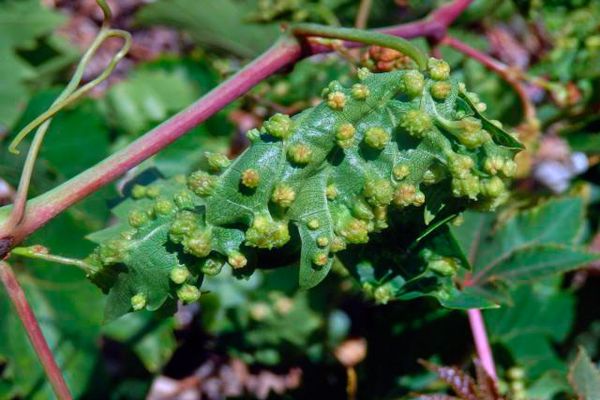
Full
The full cycle typical of American varieties begins in spring.The larva, emerging from the winter egg, crawls onto the leaf, clinging to it. The root species of the pest partially emerges from the formed gall. Aphids sink into the ground and continue to damage the rhizome.
In August, part of the larvae transforms into winged forms, laying eggs on the bark of the plant. After winter, the cycle repeats.
Incomplete
On European varieties, aphids develop in an incomplete cycle. Infection begins immediately from the roots. Larvae emerge from the eggs laid by the female. Moving underground, they infect new bushes. In the fall, most of the pests die. The overwintered larvae of the first generation continue to reproduce next year.
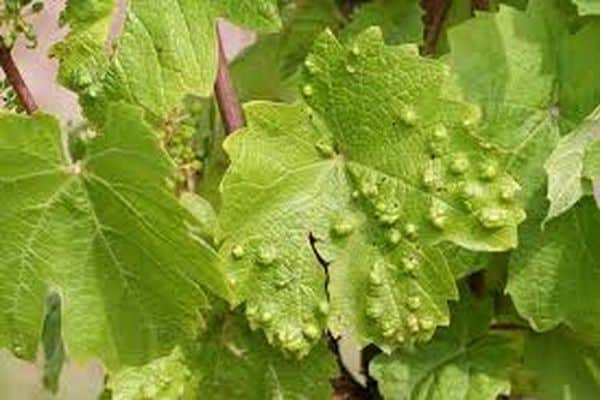
Reasons for the appearance of phylloxera
The causes of the emergence of grape phylloxera are an infected seedling, an incorrectly selected variety for a given climate. Soil composition also matters.
On what soils does aphid infestation
Loose soil is great for pest breeding. Sandy soil has a detrimental effect on phylloxera.
Conditions for the development of the parasite on grapes
Aphids reproduce well on varieties that are highly susceptible to this disease. Basically, these are European species. In young vineyards with shallow roots.
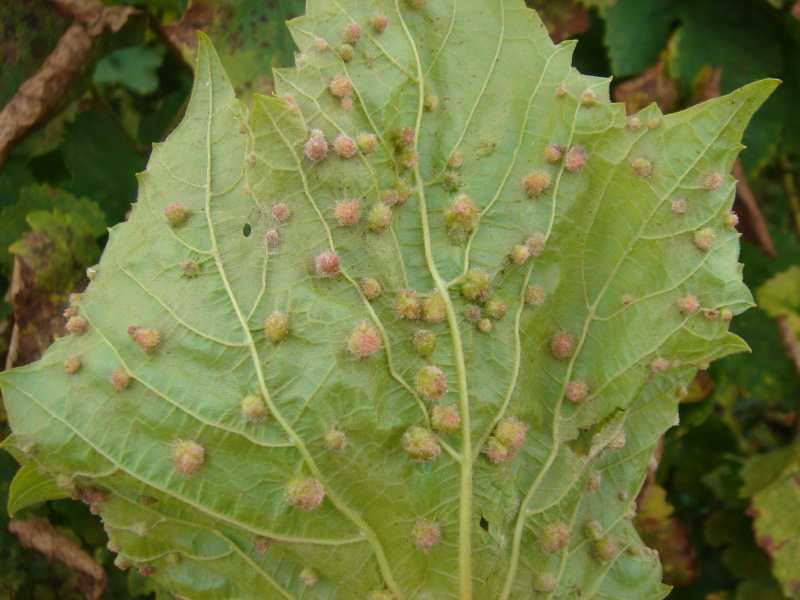
Phyloxera is well adapted to all weather conditions
Distribution methods
The first method of propagation is passive: wind, heavy rains, which entail rain, mud flows.
The second - by man: the use of contaminated garden tools, stakes, on shoes, when purchasing a plant affected by pests.
The third is the independent movement of parasites.
Forms of the disease and characteristic signs
There are several forms of the disease.
Root
To detect infection of the roots of grapes with phylloxera, it is necessary at the end of July to free the upper part of the root system from the soil and carefully examine.

The infected root has the following signs: small swellings have appeared on the thin roots, and clusters of aphids are visible on the large roots. The root dries up, the bark crumbles.
Sheet
The leaf form is much easier to find the root. If spherical, convex, rough spots on the inside of the leaf appear on the leaves, this is a sign of the first infection.
Winged
The winged aphid also infects leaves by laying eggs on the inside of the leaf.
What is the danger of infection for grapes
Phyloxera is very dangerous for grapes. If the fight against this pest is not started in time, the young shrub will die within three years.
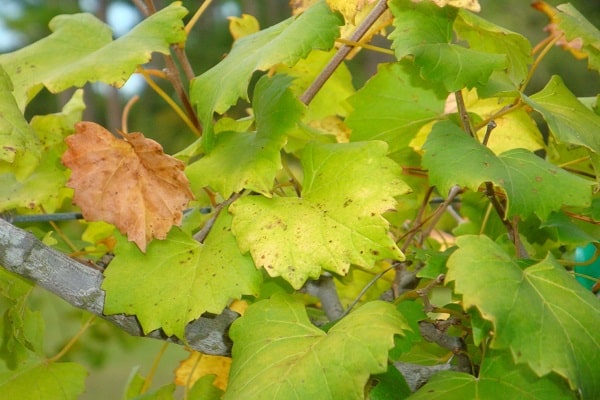
Implications for the harvest
In an infected vineyard, most of the berries do not ripen, the amount of harvest decreases.
Danger to the bush
Aphids that have settled on a plant suck out the juice from it, damage the protective layer of the plant, and introduce an infection. After this, the decay process begins. The bush gradually fades, growth slows down, infections become more, the plant dies.
Pest Control Tools and Materials
They destroy the pest by mechanical, biological, chemical means. The mechanical method is the most laborious. The affected parts are removed by hand and burned. Insects are washed off with a stream of water from a hose. Affected plants are uprooted, subsequently treating the soil with chemicals.
As a biological agent, parsley seeds are sown around the vineyard and between the plants. The smell repels insects.
When aphids appear, systemic chemicals are used to spray plants.
Folk methods of struggle
For the prevention and control of the pest, you can resort to using folk remedies.
Ferrous sulfate solution
- Dilute 300 grams of ferrous sulfate in ten liters of water.Treat the shrub with the resulting solution in early spring.
- To destroy the root aphid, a groove is made around the bush. A composition made from 10 liters of water and 500 grams of ferrous sulfate is poured into it. After the soil has absorbed the solution, fill the groove with earth.
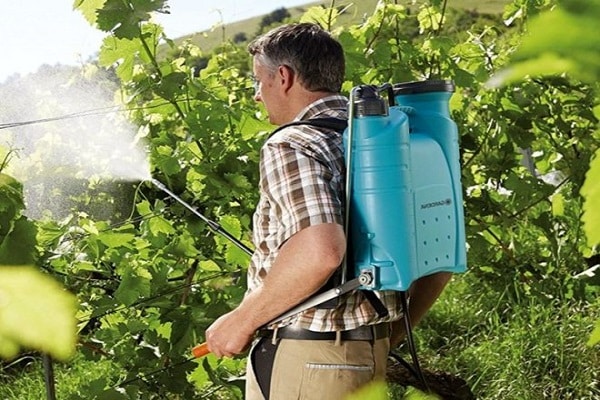
Spraying with slaked lime
In autumn, after harvesting, you can fight phylloxera with slaked lime.
Dilute half a liter of lime in ten liters of water, add half a liter of diesel fuel. Process the grapes with the resulting solution.
Treatment with herbal infusion
If the aphid was found at the initial stage of development, herbal infusion will help get rid of it.
You need to take 200 grams of the following herbs: chamomile, wormwood, makhorka, tobacco. Pour the herbs with five liters of boiling water, leave for 10 hours. Dilute the strained broth in 20 liters of water. The prepared infusion can be sprayed not only on the bush, but also on the soil.
Chemicals
If aphids have been found on the leaves of grapes, cleaning should be done before treating the affected bush with chemicals. To do this, it is necessary to conduct a thorough inspection of the plant and remove damaged greens. After burn it.
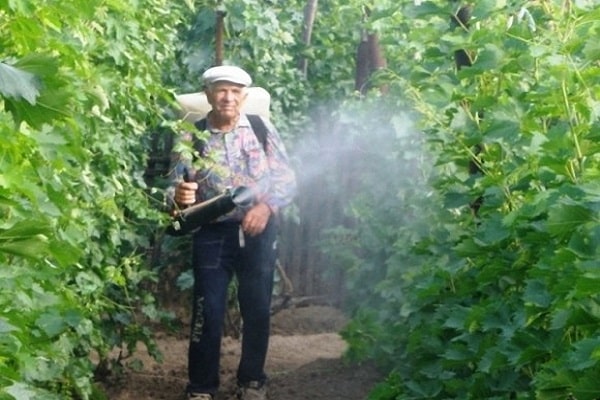
Treat the peeled bush with any of these preparations:
- pyrethroids;
- phosphororganic compounds;
- neonicotinoids.
Following the instructions, dilute the preparation and spray the green part of the bush.
If the root is infected, it is necessary to treat the soil with carbon disulfide. Seventy milliliters per square meter.
Preventive measures
Getting rid of phylloxera is very difficult, almost impossible. Therefore, it is worthwhile to devote more time to preventive work. To avoid purchasing contaminated grapes, you should not make a purchase from strangers in spontaneous markets.
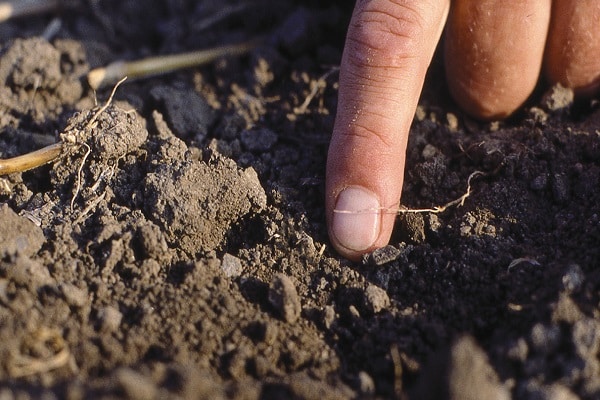
Before planting, the seedling must be immersed in a weak solution of an insecticidal preparation for several minutes.
It is worth paying attention to the soil in which the grapes will grow. Sandy soil can provide good protection against aphids. In such soil, phylloxera quickly dies, and the roots practically do not rot.
If it is not possible to grow grapes in sandy soil, when planting, you need to dig a hole deeper than usual, cover the bottom with sand.
Saplings are planted at a sufficient distance from each other for good ventilation. For prevention, grapes should be treated with fungicides and insecticides. The first spraying is carried out in the spring, after the leaves appear. The next treatment is before flowering. The final spraying is carried out after the formation of ovaries.
Rating of phylloxera-resistant varieties
If you choose varieties from own-rooted, more resistant are: Krasnostop AZOS, Kubanets, Cabernet AZOS.
With proper care, varieties: Muscat, Chocolate, Nugget, Moldova, Antey have good immunity to the disease.
